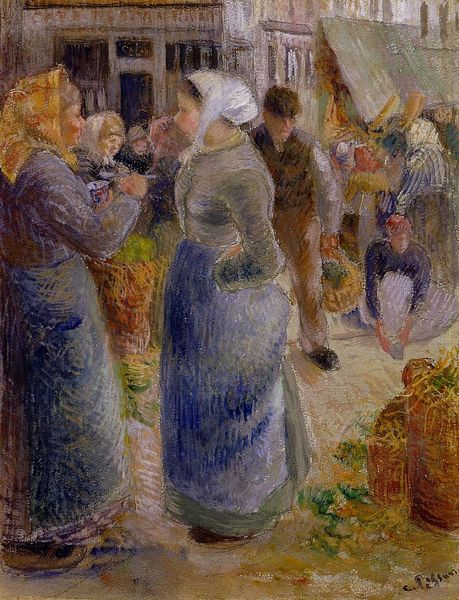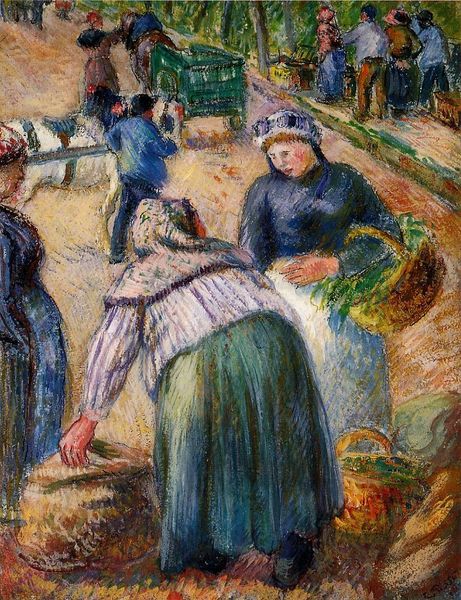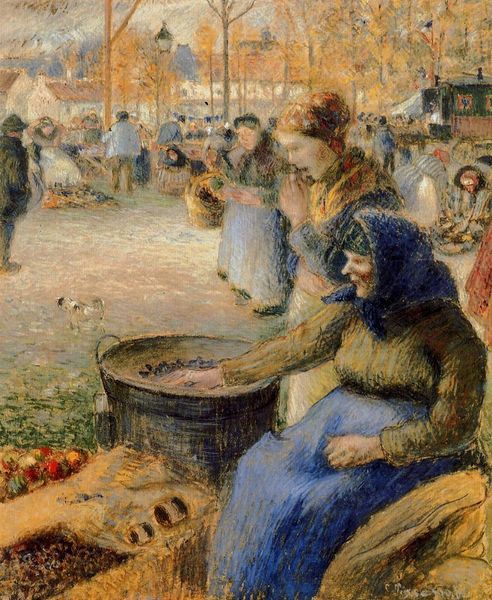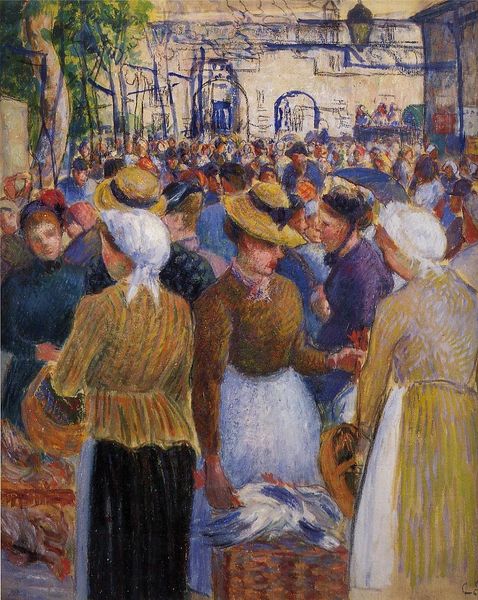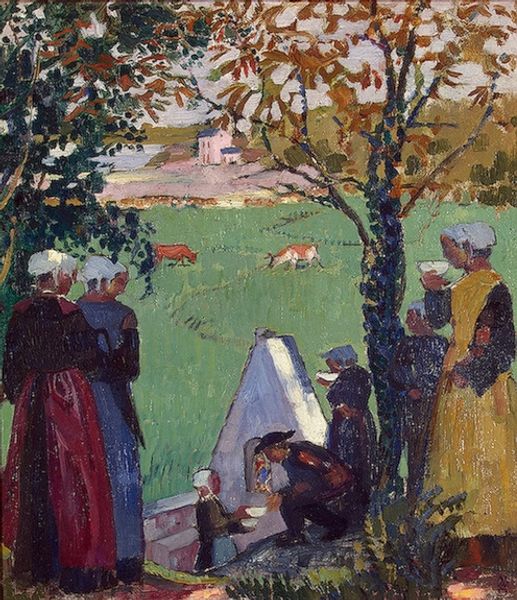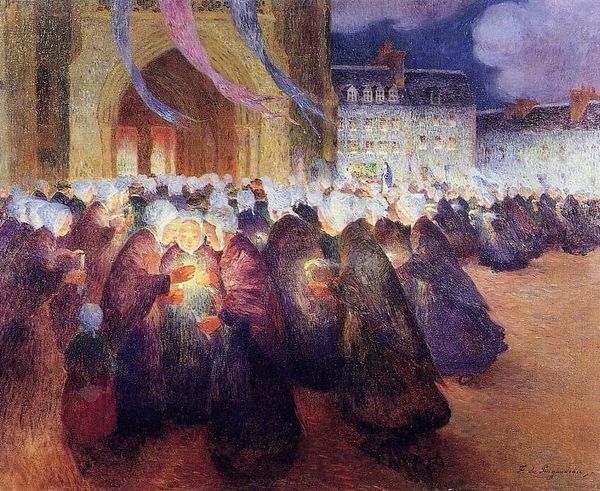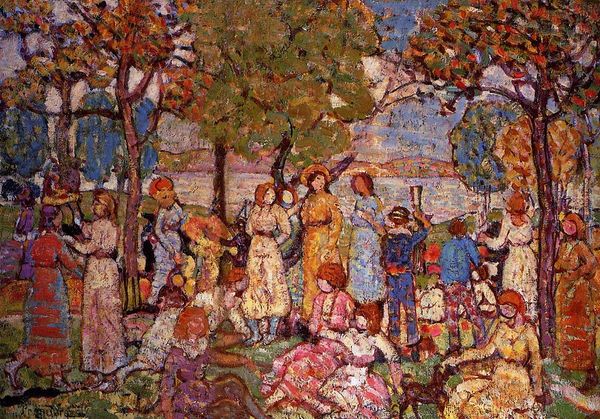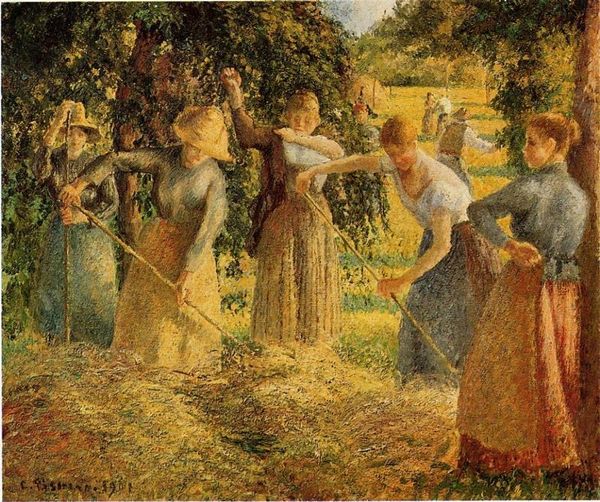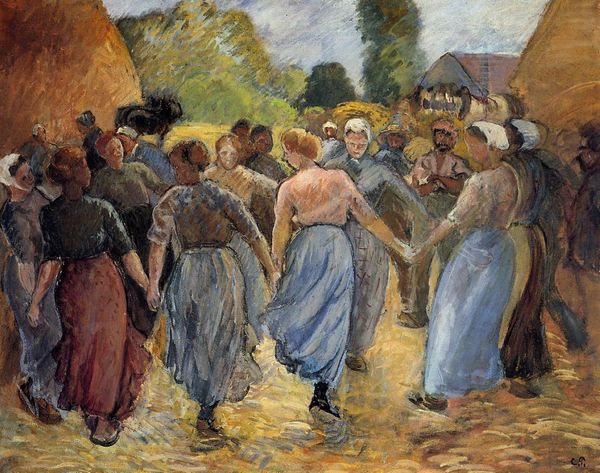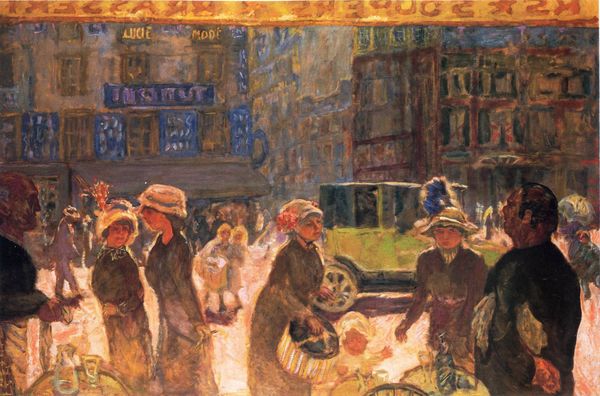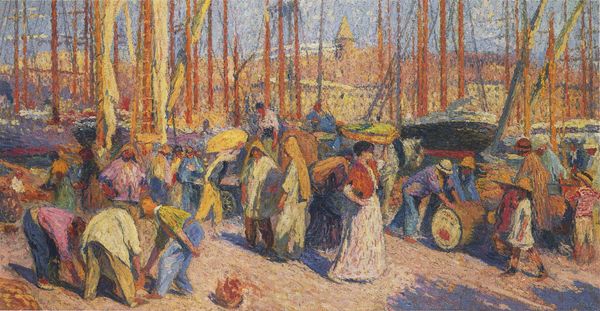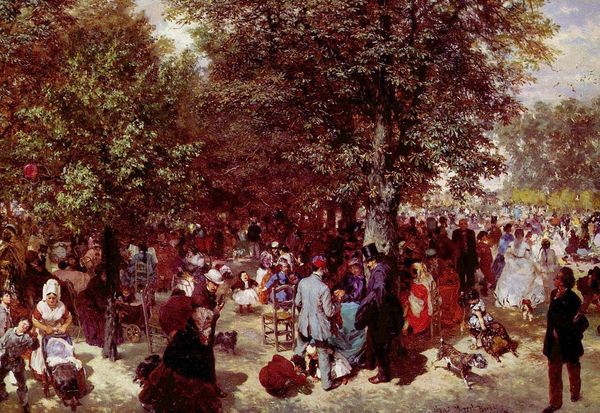
painting, oil-paint
#
painting
#
impressionism
#
oil-paint
#
landscape
#
impressionist landscape
#
oil painting
#
cityscape
#
genre-painting
Copyright: Public domain
Editor: So, here we have Camille Pissarro’s “The Market in Gisors,” painted in 1887, with oil on canvas. It’s full of bustling figures, a true slice of everyday life, captured in those wonderful impressionistic brushstrokes. What catches my eye is the palpable sense of labor - of people working and trading. What do you make of it? Curator: It’s fascinating how Pissarro collapses the traditional hierarchy between high art and the labor of everyday life. The materiality is everything here: the thick application of oil paint itself becomes a kind of physical labor, mirroring the work depicted in the scene. Look at the way the brushstrokes construct the forms – the figures, the stalls, the landscape. They're built, not just represented. How does that affect your reading of the subject? Editor: That's a great point! It's not just about visually depicting a market; it’s about embodying the *making* of a market scene *through* labor. Are you suggesting then, the very act of painting becomes a form of documentation, or maybe even participation, in this economic ecosystem? Curator: Precisely! Pissarro isn't just observing; he’s actively engaged in the processes of production and exchange through the very materiality of his painting. Consider how the work relates to notions of materiality, production, and exchange at the time – and ask what is considered 'high' and 'low' culture during that period? How might a piece like this challenge those conventions? Editor: This definitely encourages me to see Impressionism in a completely new light. Thinking about brushstrokes and material application as active labor – as a direct link to the work shown within the painting – that changes everything for me! Curator: Indeed. Seeing art through the lens of its materials and the means of its production opens a rich ground for consideration, challenging established assumptions. We're invited to consider all the work – and value – tied to the canvas.
Comments
No comments
Be the first to comment and join the conversation on the ultimate creative platform.

